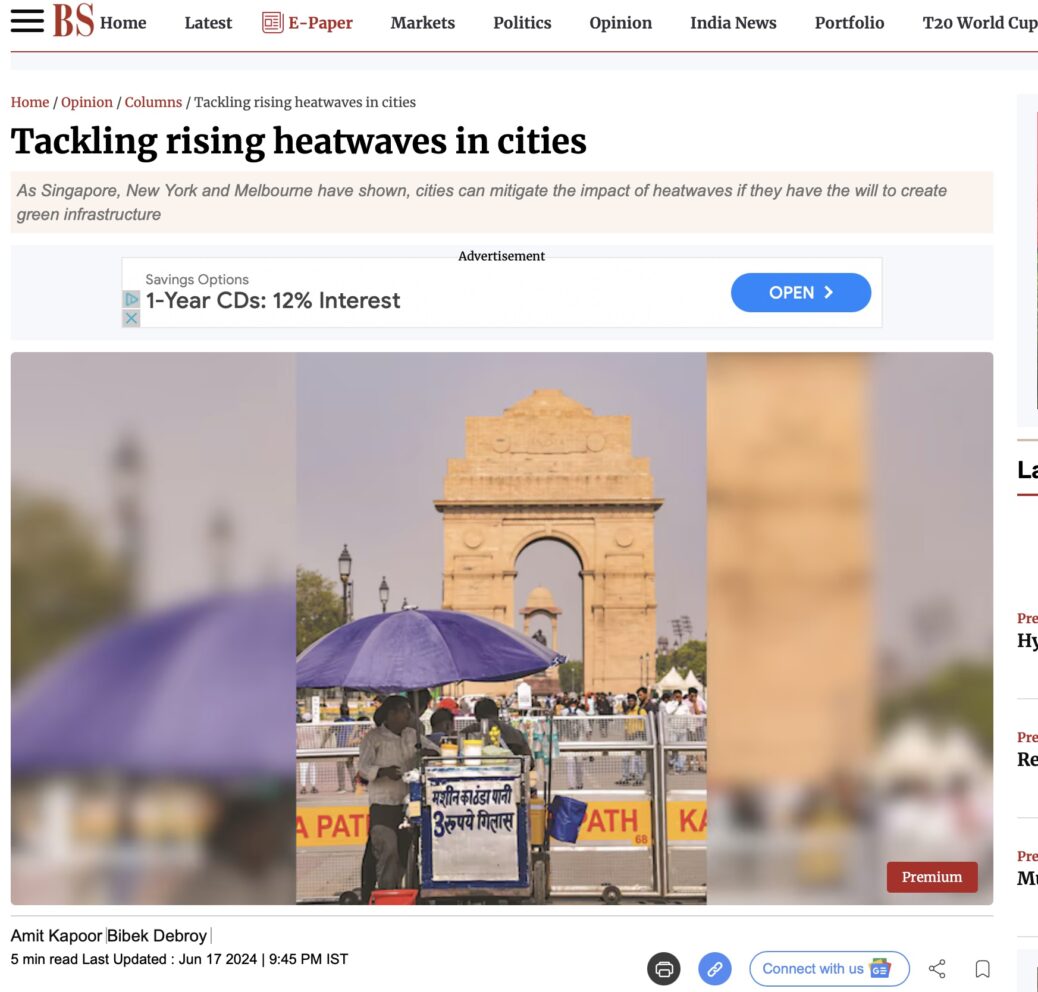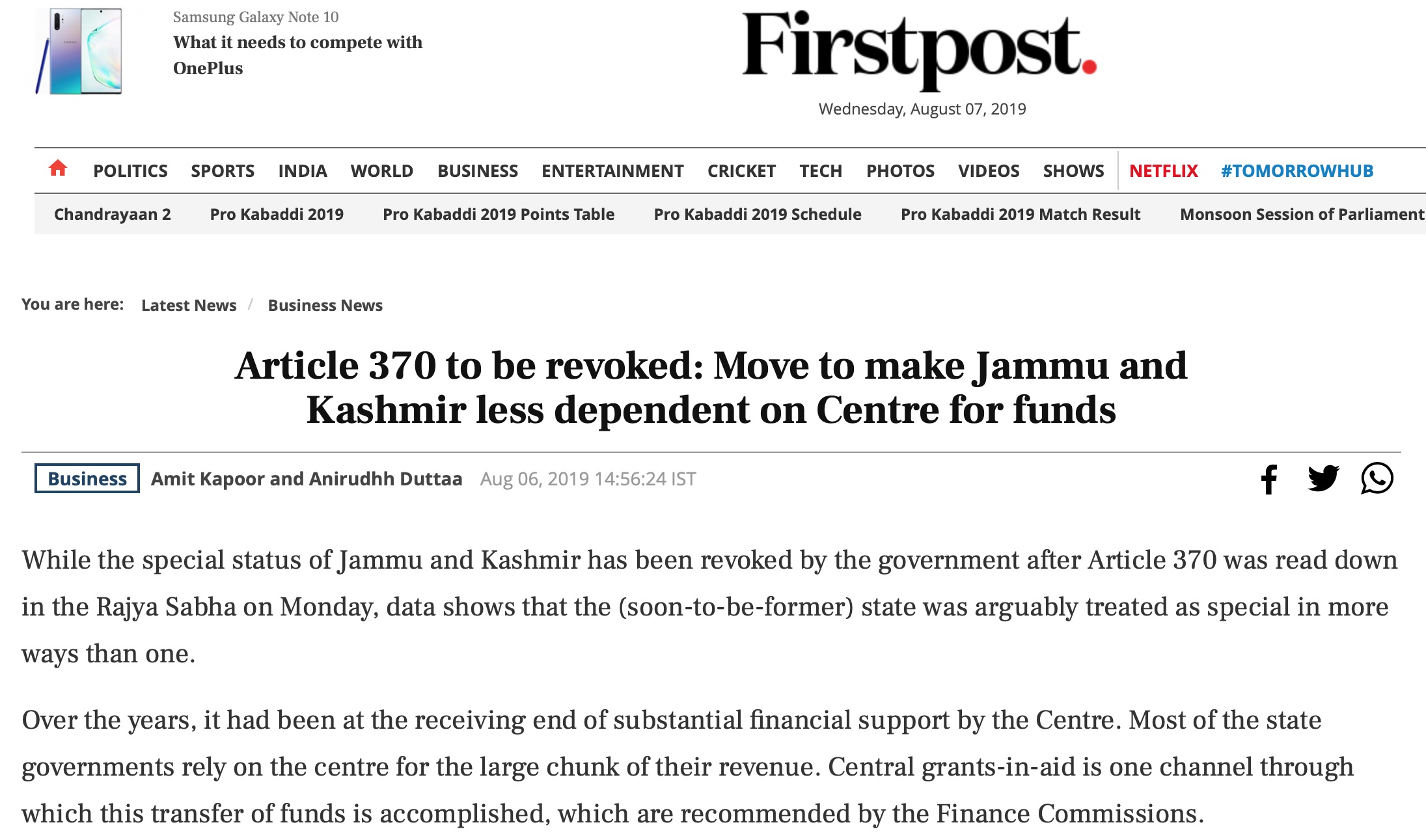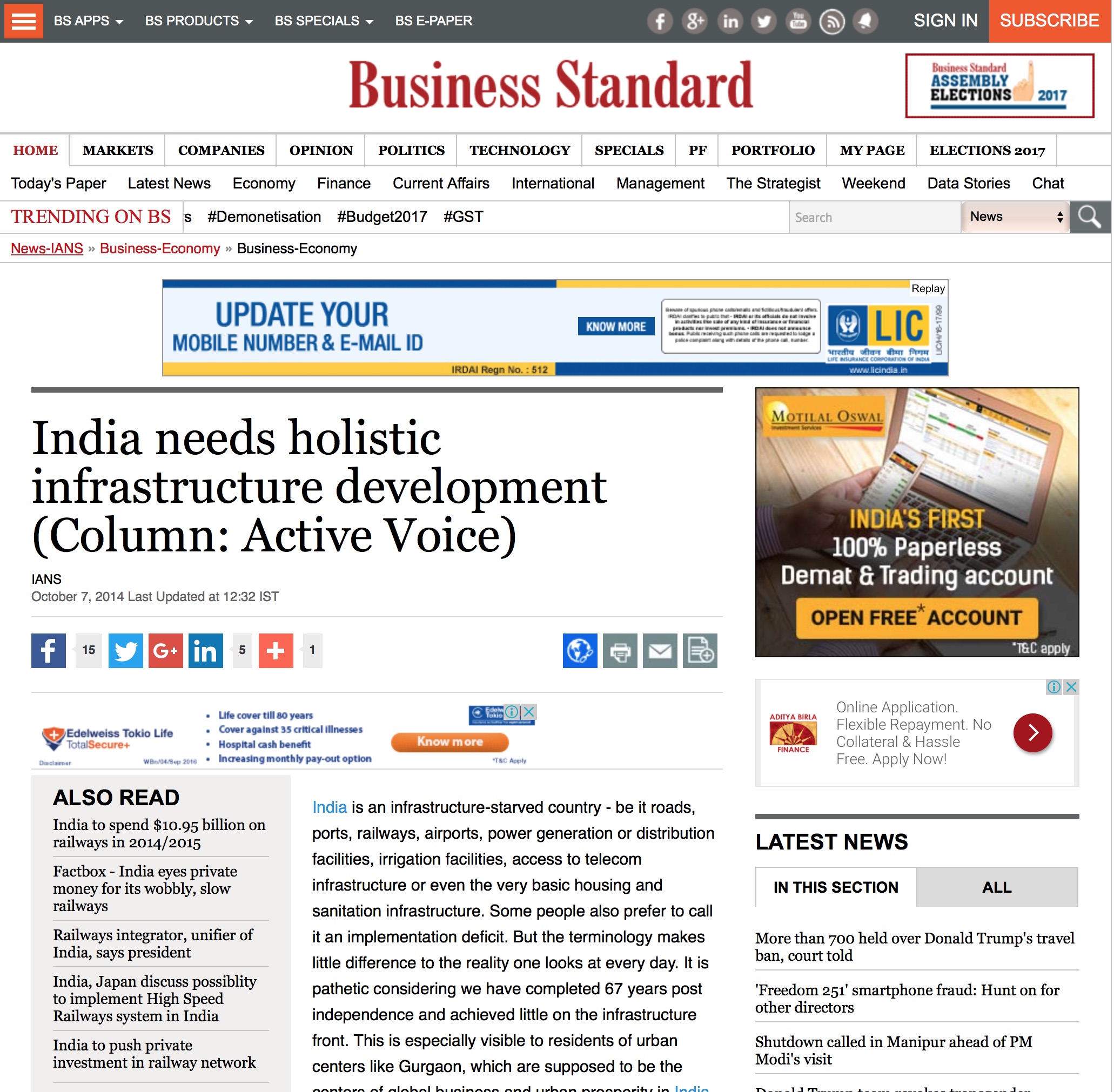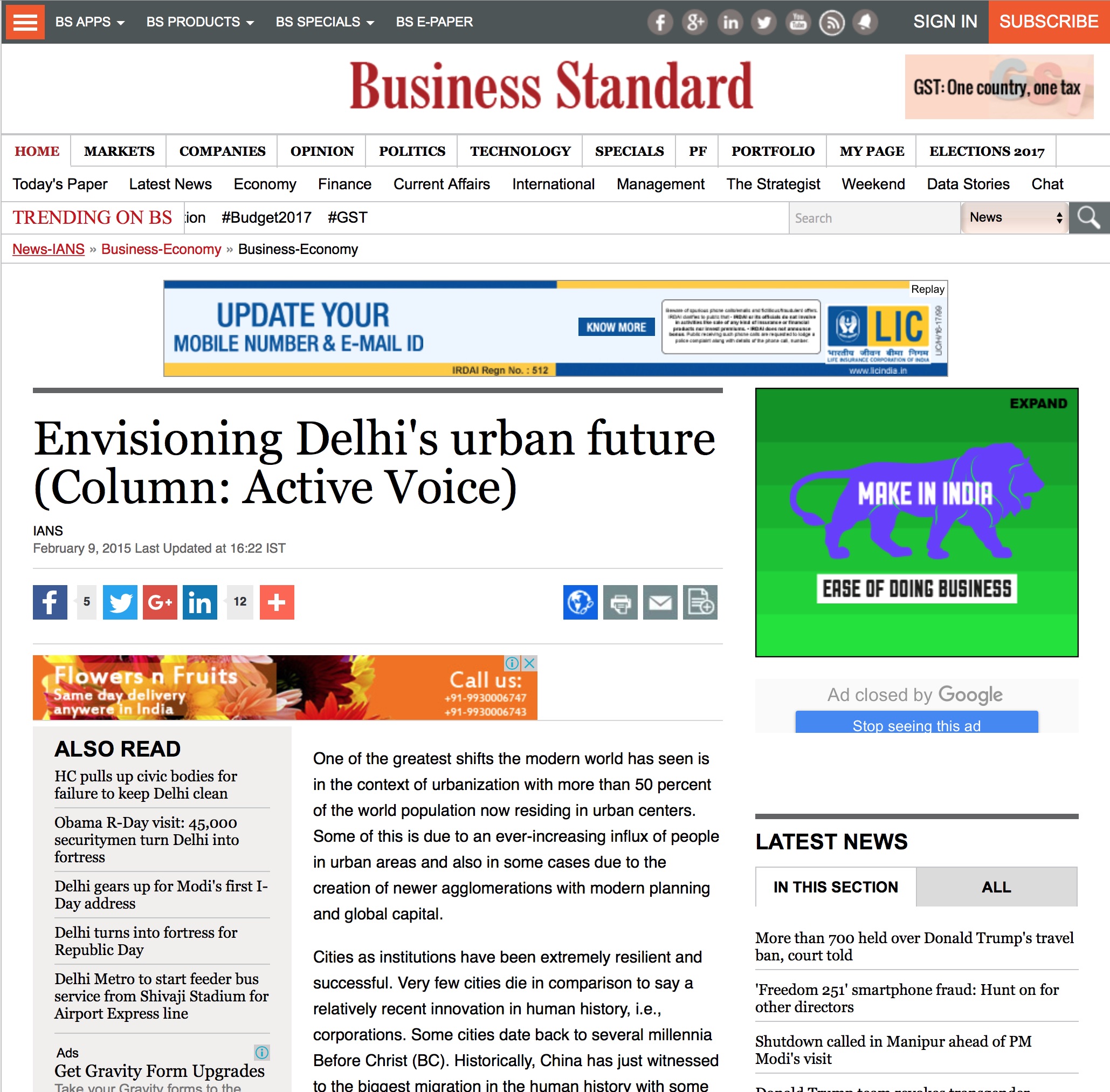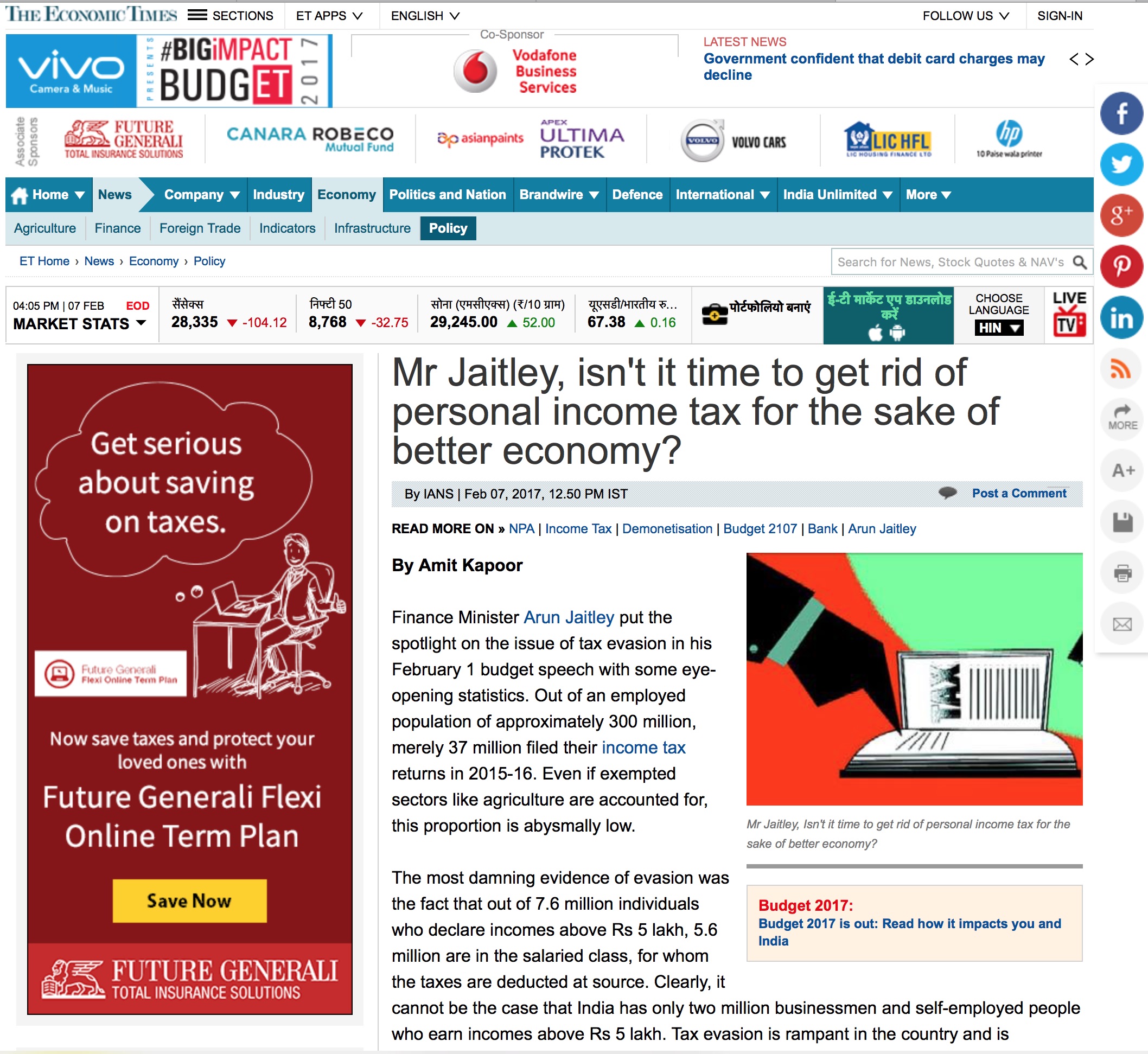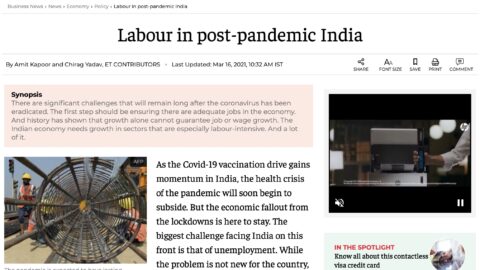By Amit Kapoor & Bibek Debroy
May 2024 has been particularly severe for India, as the country endured one of the harshest heatwaves in recent memory. Temperatures were reported to be 1.5 degrees Celsius higher than the previously recorded highest heatwave. The climate crisis, exacerbated by El Niño, has pushed temperatures to unbearable levels, resulting in fatalities and highlighting the urgent need for climate-resilient and smart solutions across all sectors to prevent more damage. As the global urban population grows, more people are exposed to extreme weather conditions, significantly affecting vulnerable and marginalised communities. According to a study conducted by C40 (Cities Climate Leadership Group), a coalition of 96 cities worldwide committed to combating climate risks and implementing urban solutions, over 350 cities are currently at risk of extreme heat conditions, with this number expected to rise to around 970 cities by 2050. The same study highlights that over 26 million people living in poverty in cities are exposed to extreme heat (roughly over 230 cities). By 2050, this number will increase to nearly 215 million people (roughly 490 cities). Additionally, UNICEF reports that approximately 560 million children are already exposed to frequent heatwaves, which will increase to 2 billion by 2050. Such extreme conditions indicate that individuals currently exposed to high temperatures or frequent heatwaves will need to adapt to even more severe heat in the near future, while those living in traditionally cooler areas will experience temperatures that they are not accustomed to. Therefore, city planners must prepare for these events to ensure that people endure less climatic stress.
Urban planning must evolve into a holistic approach that interweaves adaptation with the fundamental necessities of modern living as an important strategy for combatting extreme heat. At the heart of this transformation lies the need for resilient urban infrastructures. Cities must envision a future where every individual, regardless of their socio-economic status, has access to essential services that enhance daily living and fortify against climate extremes. Accessible and affordable healthcare becomes paramount, ensuring that the most vulnerable populations can withstand and recover from the health impacts of extreme heat. It’s not just about treatment but prevention and support, creating a safety net that catches those who might otherwise fall through the cracks during heat waves. Public transport systems also play a vital role as reliable and efficient transportation networks reduce the dependence on private vehicles, thereby lowering emissions and urban heat island effects.
The present crisis also emphasises the crucial need to rethink green infrastructure as a means to combat extreme heat waves. Green infrastructure involves a network of nature-based solutions aimed at tackling urban and climate-related challenges. These solutions include stormwater management, climate adaptation, reducing heat stress, promoting biodiversity, and sustainable energy production, alongside human-centred measures like offering shade and shelter. Green infrastructure creates an ecological framework that fosters the social, economic, and environmental health of communities. Therefore, these ecological components should be leveraged within city planning and designing. It has become imperative that solutions for mitigating extreme climatic events in urban areas must be sought in the very process of urbanisation with a focus on environmental engineering. Urban planning through environmental engineering mainstreams the transition to sustainable options in order to tackle complex urban challenges. In its Sixth Assessment Report, the IPCC also emphasised upon the ecosystem-based approaches like urban greening, restoration of urban forests and wetlands, and establishing early warning systems and disaster risk management systems for further adaptation.
Global experiences of innovation in this regard, like the “City in a Garden” approach in Singapore, the “Cool Roofs” program in New York City and the “Urban Forest Strategy” in Melbourne, offer lessons in making cities more liveable and sustainable in the face of climate change. Singapore significantly mitigated urban heat through its extensive use of green roofs and vertical gardens. Similarly, in the Cool Roofs program, NYC implemented a city-wide drive to paint rooftops white to reflect sunlight and reduce heat absorption. In its 20-year strategy implemented in 2012, Melbourne focussed on increasing its urban forest with a goal to increase canopy cover to 40% by 2040. UNDP has also launched a “Beat the Heat Campaign” that focuses on community action and engagement to implement heatwave solutions, focusing on children, the elderly and women in cities.
Effective strategies for reducing urban heat include integrating more green infrastructure into cities. Increasing the number of parks, gardens, and green roofs can significantly lower urban temperatures. Similarly, planting urban forests, with trees lining streets and filling public spaces, not only reduces temperatures but also improves air quality and enhances the city’s aesthetic appeal. Another essential approach involves using cool roofs and pavements. Cool roofs, designed to reflect more sunlight and absorb less heat than standard roofs, use reflective materials or coatings. Similarly, cool pavements, which can be applied to parking lots, sidewalks, and streets, reflect more solar energy, resulting in lower surface temperatures. Effective water management also plays a crucial role in mitigating heat. Urban water bodies such as fountains, ponds, and artificial lakes can cool surrounding areas through evaporative cooling. Additionally, rain gardens and bioswales, designed to manage stormwater and reduce runoff, contribute to cooling urban environments through the presence of both water and vegetation. Designing cities to be more compact can reduce the heat island effect by minimising paved surfaces and reducing the need for extensive transportation networks. Additionally, orienting buildings to maximise natural ventilation and shade can decrease reliance on air conditioning, thus lowering overall heat generation. By integrating these diverse strategies, cities can mitigate the impact of heat waves, improve urban liveability, and enhance resilience to climate change, ensuring a healthier and more sustainable urban environment for the future.
The article was published with Business Standard on June 17, 2024.

